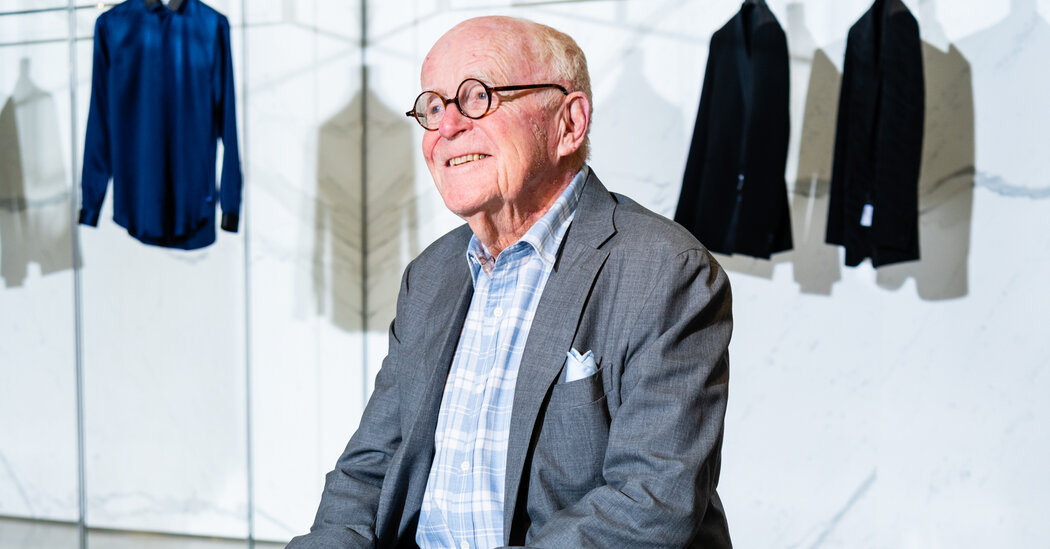“Nice” tends to be dirty word in business. The cliché holding that nice guys finish last has seldom seemed more true than in the landscape of contemporary retailing, where business is dominated by corporate consolidation, monopolistic practices and shareholder returns as the ultimate value.
Yet nice, as it turns out, may not be altogether pejorative — at least judging by the career of Bruce Nordstrom, who died May 18 at age 90. It may even be a key to success.
For decades, Mr. Nordstrom helped lead the Nordstrom retail empire, which was founded in Seattle in 1901 by his grandfather, an immigrant from Sweden. The fashion retail colossus began as a shoe store, and ultimately expanded to include 150 locations worldwide.
Publicly traded since the 1970s and still family-run, the Nordstrom chain was predicated on an ethos of decency and niceness, Robert Spector wrote in “The Nordstrom Way,” his 1996 book about the company’s vaunted reputation for customer service.
“I came at the reputation with skepticism,” Mr. Spector said by telephone from his home outside Seattle. “I wish it were more complicated, but they are who they say they are, decent and humble and focused on the customer first.”
The Nordstrom culture of customer care is not only real, it originated from a family tradition of bottom-up managerial training. Bruce Nordstrom may have run a multibillion-dollar company, but he never forgot his beginnings sweeping floors and breaking down boxes for 25 cents an hour. “It may be the biggest competitive advantage they have,” Mr. Spector said of Nordstrom’s unusual company structure.
A familiar story in retail circles would appear to underscore this mind-set. “The C.E.O. of a huge retail chain was dealing with a series of problems,” the fashion brand consultant Josh Peskowitz said by telephone this week. “And someone in the corporate office said: ‘You know what? Call up Mr. Nordstrom and ask for his advice.’”
By then some years into his tenure as president of the family business, Mr. Nordstrom promptly issued an invitation. “He said, ‘If you want to come out to Seattle, I’m happy to have a chat and tell you what we do,’” Mr. Peskowitz recalled.
Mr. Nordstrom opened up his company’s books to the C.E.O., Mr. Peskowitz said, showing him “the employee guide, the return policies, everything, and then, at the end of the meeting, the man said: ‘Wow, thank you. I really appreciate you doing this.’”
Not surprisingly, he asked Mr. Nordstrom why. “The way the story’s told,” Mr. Peskowitz said, “Mr. Nordstrom’s response was, ‘I’m happy to show you anything we do because I know you can’t do it.’”
While the tale smacks of myth, it is not altogether implausible, say those in the garment business, where the Nordstrom reputation for almost sleepy solidity is buoyed by an aptitude for innovation and a willingness to bet on new talents and stand by them. One of the company’s largest sales producers, Jesse James Barnholdt, was early to social-media commerce, and is reported to have sold $2 million worth of designer shoes through Instagram. Given the volume of labels currently exiting the business, this approach is no small thing.
“They took a chance on Bode and have continued to support our growth in many forms, from helping us built our first shop-in-shop retail experience to bringing us to the Met gala,” the designer Emily Bode said by text message on Monday. “I’ve always been honored to work with them because of their family history, brand values and honesty in this wild industry.”
When the men’s wear designer Joseph Abboud was starting out in the 1980s, the 1930s cuts of his suits, with their slouchy attitude and ventless jackets, were deemed too sophisticated and European to market to consumers accustomed to boxy Brooks Brothers suits. “There was a general mandate not to buy nonvented clothing,” Mr. Abboud said this week. “Then one brave Nordstrom’s buyer bought 230 units.”
As the buyer rightly predicted, Mr. Abboud was onto the zeitgeist. Thirties glamour was to be the next evolutionary stage in men’s wear, and he went on to sell millions of dollars at Nordstrom in the coming decade and to win the men’s wear designer of the year award from the Council of Fashion Designers of America two years in a row. “To a large extent, we’ve lost that creative courage at retail,” Mr. Abboud said.
Merchant princes like Mr. Nordstrom, he added, have largely been replaced by consultants well-versed in corporate-speak and omni-channel marketing and yet lacking the gut instincts that once made department stores essential cultural destinations — places to encounter novelty, to experience great showmanship and to track that ineffable yet central dimension of fashion: buzz.
“True, Nordstrom never had the Bloomingdale’s hype or the Barneys sizzle,” Mr. Abboud said. “But in their quiet, decent way, they led in innovation, and did it with an added weapon, which was this incredible old world concept that the customer comes first.”







